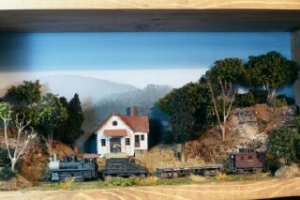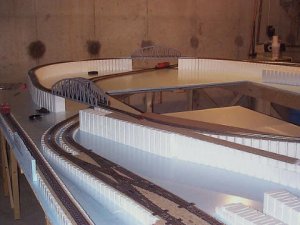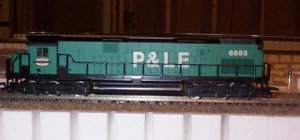There is a fellow here I know who is in the process of converting from HO to O gauge. Apparently he is cleaning out the closet as everything of his I've seen has been neatly packed away in original boxes, etc.
The prices are right, so I've bought about everything he has produced... a couple of GP 18's, one with a custon Frisco paint job and the other a N&W, a Frisco F-7A and a variety of rolling stock (a dozen unopened) and this mystery engine. I know what it says on the box, I've just never heard of it before....... it is a New York Central Alco C 628, built for Model Power by PMI in Yugoslavia. Is green with black walkways and hand rails and along the engine cowling in big white letters is P & L E. The engine # is 6685.
Does anyone have any idea what I spent my $5.00 for? By the way, it runs great! Also, where the GP 18 is about 8" long, this baby is about 10"
Bob
The prices are right, so I've bought about everything he has produced... a couple of GP 18's, one with a custon Frisco paint job and the other a N&W, a Frisco F-7A and a variety of rolling stock (a dozen unopened) and this mystery engine. I know what it says on the box, I've just never heard of it before....... it is a New York Central Alco C 628, built for Model Power by PMI in Yugoslavia. Is green with black walkways and hand rails and along the engine cowling in big white letters is P & L E. The engine # is 6685.
Does anyone have any idea what I spent my $5.00 for? By the way, it runs great! Also, where the GP 18 is about 8" long, this baby is about 10"
Bob




